Tell me if this sounds familiar: your family’s living space needs have swelled into every square foot of your 2-bedroom house, edging your home office into your drafty attic or dungeon-like basement—spaces that suit a vampire just fine, but aren’t ideal for mere mortals.
It’s a sacrifice you gladly make as an entrepreneur. But dark, cramped, and unappealing spaces could actually be doingharmto your business, not to mention your psyche.
Tech startups are famous for investing heavily in swanky office spaces for their employees. While it might feel like money-burning, there’splenty of researchto support that thoughtfully designed spaces canincrease productivityand happiness. Andhappy workers do good work—the ROI is obvious.

photo: Airbnb HQ, via Custom Spaces
Investing in yourself, via a space that inspires you, is an investment in your business. Here are some home office ideas for every budget:
Home office: DIY vs designer
Should you do the work yourself, or hire someone to do it? Weigh the options:
- Are you handy and creative, or will your novice mistakes end up costing more in the long run?
- Do you have the time to spare in your busy schedule?
- Can your budget make room for the cost of hiring a professional?
- Is it a basic re-design (cosmetic finishes, rearranging furniture) or a major overhaul involving contractors?
For more involved or complicated projects,Interior Designers are the space experts, and can actually save you money by leveraging labour contacts and industry discounts on materials. Search for professionals in your area using Houzz.
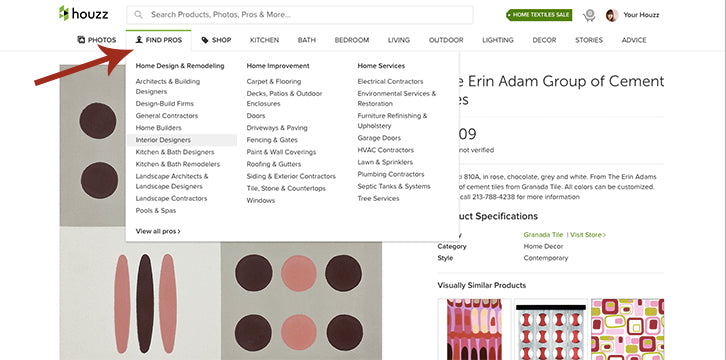
Find pros via Houzz
Otherwise, there are plenty ofcost-effective DIY ideasthat don’t require a ton of skill. Pinterest and YouTube are replete with step-by-step tutorials and ideas for home office design.
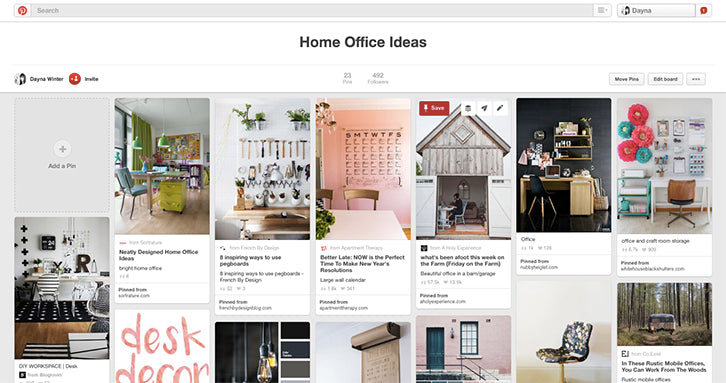
Collect your home office inspiration in a Pinterest Board
Planning your home office space
Location, location, location
Choose a room in your home that can accommodate every aspect of your business, allowing all tech, supplies, and equipment to be close at hand.
Professional designers work withminimum dimensionsof 60″ (150cm) by 84″ (210cm) when designing a workspace. Your desired location may not meet these minimums, but it’s important that youconsider how you’ll move in the space: is there enough space to slide out the chair? Can you comfortably complete your daily tasks?
If you’re a maker, and your home office is also your production space, you may need even more room.Consider alternate spaces in and around the home: heated garages, finished basements, hobby sheds, coach houses. Take over the guest bedroom, and add a murphy bed or pull-out couch to save room and make it a multi-functional space.
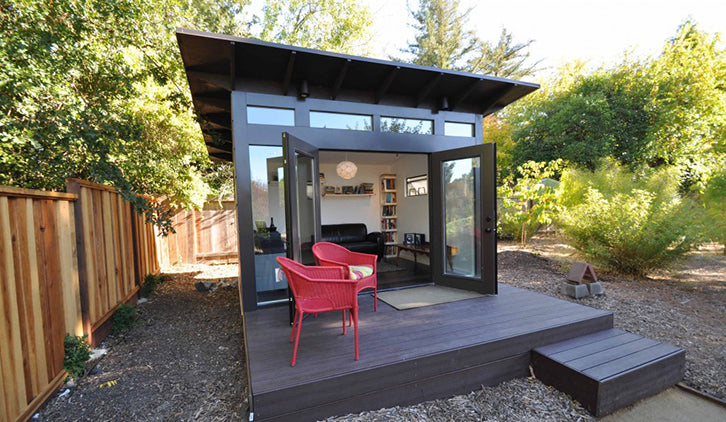
photo:backyard shed office space
Tiny living spaceslike condos can also accommodate a dedicated home office. Think closets, multi-purpose rooms, or clever fold-away furniture.
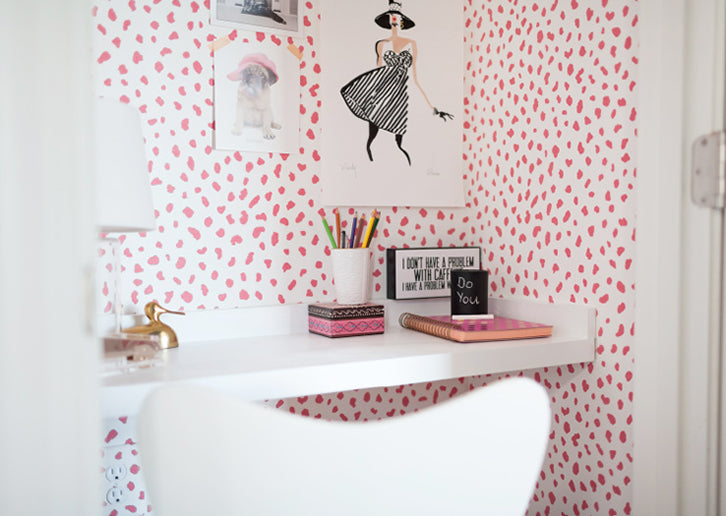
photo: closet repurposed as a tiny office, viaWest Elm
When determining placement in the home, ask if you’ll be为会议使用空间, or greeting customers. Choose an area on the main floor, close to the entrance.
Lastly,eliminate distractions. The kitchen is a typical hub of activity and can be convenient for parents who work from home, but can also distract. Conversely the workspace can distract from family time once you’ve “clocked out”. Carve out a dedicated space to provide distinction between life and work.
Designing the layout
An interior designer can work with you to establish a layout that meets your needs. If you’re going the DIY route, there are plenty ofonline tools and appsthat can help plan the space:
- 3D Plans:roOomy(iOS) can convert a 2D photo into a 3D room scene. Other options:Room Sketcher(desktop),Home Design 3D(Android)
- 2D Floor Plans: Stanley Floor Plan (iOS), AutoCAD 360

photo:Ballard Designs
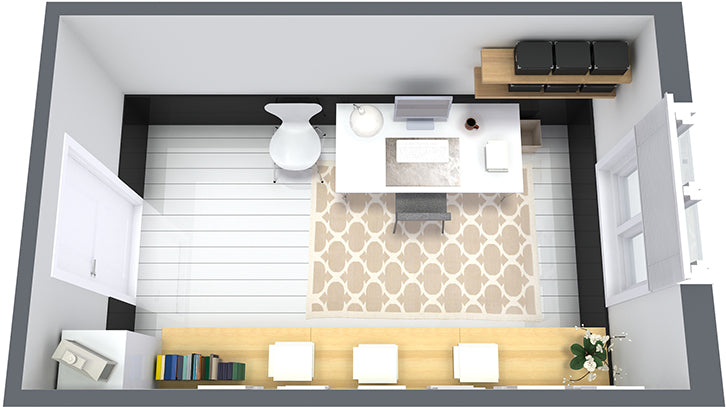
rendering: Room Sketcher
You may want toconsider designated spaces for different tasks—separate areas for thinking, meeting, working, order packing, production—to help with focus and avoid clutter.
IfFeng Shui—the ancient Chinese system that examines how energy connects people with space—is important to you, use its guiding principles to help choose a location, design the space, and arrange the objects. The philosophy says thatproper arrangement of a space can affect wealth, success, and happiness.
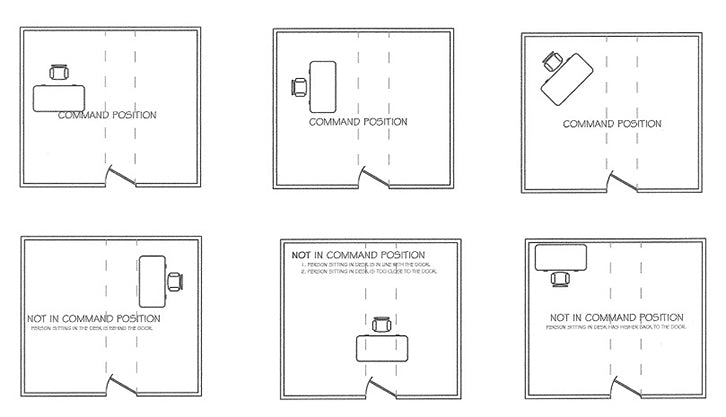
Tech
Before pulling out the rollers and tackling the cosmetic aspects, spend time on your tech setup.
- Look at the power outlets: are there enough? Will the placement of the furniture allow for access to them? Do you need power bars orcord managementsolutions?
- Is your home’s internet service adequate for your consumption needs? Will the wifi reach?
- Consider everything from home automation and smart lightbulbs to noise-cancelling headphones and printers

Free Reading List: Ecommerce Motivation
Having trouble focusing on growing your small business? Get access to our free, curated list of high-impact productivity articles.
Get our Ecommerce Motivation reading list delivered right to your inbox.
Almost there: please enter your email below to gain instant access.
We'll also send you updates on new educational guides and success stories from the Shopify newsletter. We hate SPAM and promise to keep your email address safe.
Choosing the details of your home office
Color psychology
My actual formal education is in fine art—and while drawing nudes did nothing to help me land any job since, I regularly use the principles of composition and psychology of color in designing my living and working spaces. How do you want tofeelin the room?

photo:Decoist
Picking the right colors for your home office should extend beyond personal preference. Color canimpact productivity and energy levels(blue and green are good choices, respectively).
If your work is tedious or physical, colors like orange and red can be energizing. Yellow is a great color for design types, as it stimulates creativity. Beware of each color’s negative attributes too—yellow, for example, can cause eye strain.
Smart storage and organization
Storage is an important consideration, especially in small, shared, or production spaces. Unless your business operates solely on a dropshipping model, you’ll inevitably need to make room for product and shipping materials.There are several ways to attack the problem:
- Build up—make use of the vertical with tall modular shelving
- Buy accents and furnishings thatdouble as storage
- Try an open retail display toincorporate your products into the designof the room
- Designate a closet or other area of the home for separate storage
- Rent a storage unit outside of the home

photos:Better Homes & Gardens,Digsdigs
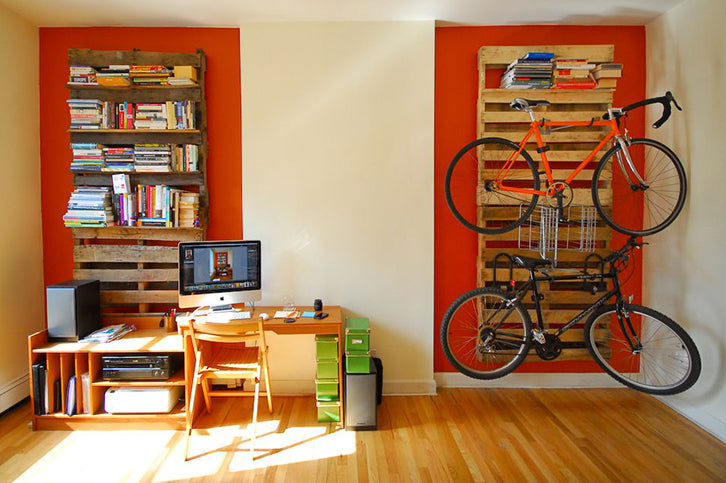
photo: build up with DIY pallet shelving, viaHomedit
While much of your day to day is likely organized thanks to apps, there are several tactile ideas to keep to-dos top of mind and inspire you to stay on track:
- Replicate your Trello boards in ananalog Kanban system, and eliminate yet another open browser tab
- Try alarge physical calendarfor marking major events like sales,goals, or product launches
- Design aclear in/out systemfor mail, paper invoices, etc.
- In offices that double as production spaces,organize tools and materials creativelyto keep them close at hand, and assign everything its own space.
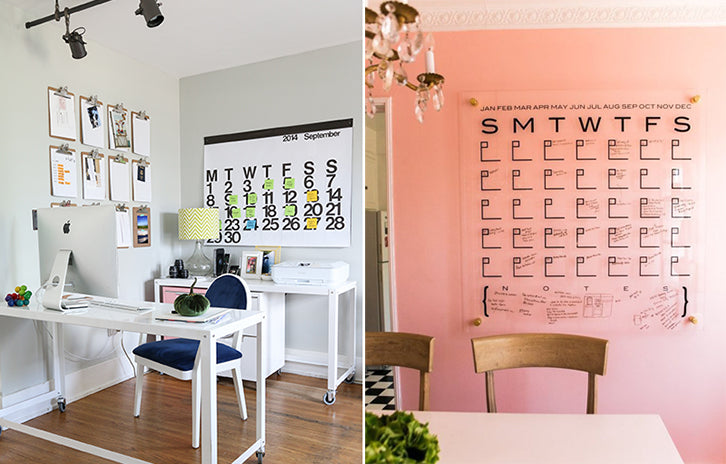
photos: Inspired by Charm,Apartment Therapy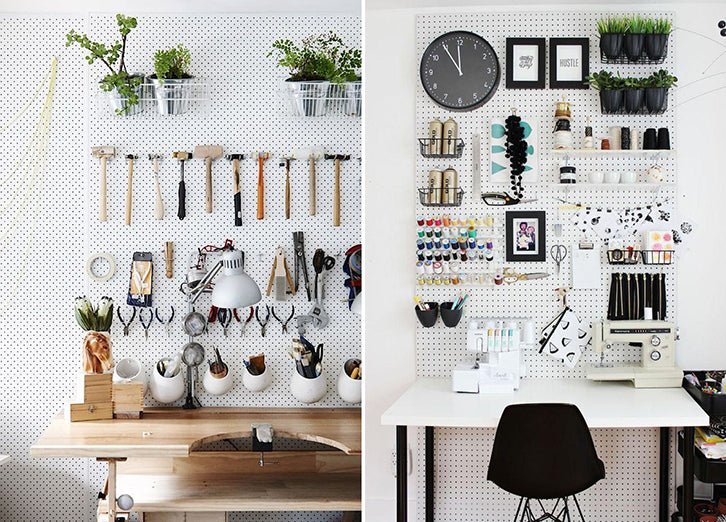
photos: peg board storage ideas, via French by Design
Healthy spaces
Your space mirrors what’s happening inside of you, says the Feng Shui practice, and research suggests that poor working conditions can contribute to poor health.
If you’re sitting for much of the day,splurge on a goodergonomic office chair. Be sure to adjust your seating to sit in the optimal position—back straight, feet flat, elbows 90 degrees—to avoid injury.
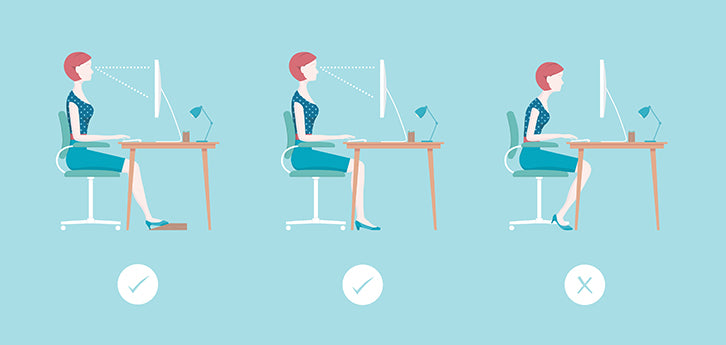
Proper sitting posture
不管椅子,久坐可以标出se adverse health problems like fatigue, back tension, and reduced heart efficiency. Alternately,consider astanding or adjustable desk, and get up and move around frequently.
Choose healthy paints (low/no VOCs) and building materials, and ensure the space has adequate ventilation.“Green conditions” can improve cognitive performanceand positively impact strategy and information usage, according to aHarvard study.
NASA’s Clean Air Studyfound thatcommon houseplants can remove harmful toxins from the air, and recommends one plant to every 100 square feet of space. Not all plants are created equal, however—the study rated 18 plants for their air-cleaning powers:

Full infographic by Love the Garden.
Catch some rays! A Northwestern University Study found that the amount of daylight exposure in officecan impact sleep, activity and quality of life.People working in spaces with windows slept an average of 46 minutes more per nightthan their windowless counterparts. If your situation won’t allow for a window, be sure you’re stocking up on vitamin D supplements.
Inject motivation
Finally, design your office with things that inspire you. What keeps you going? Is ityour kids, yourfavorite motivational quote, or the drive toward your goal?Represent that motivation visually in the space.
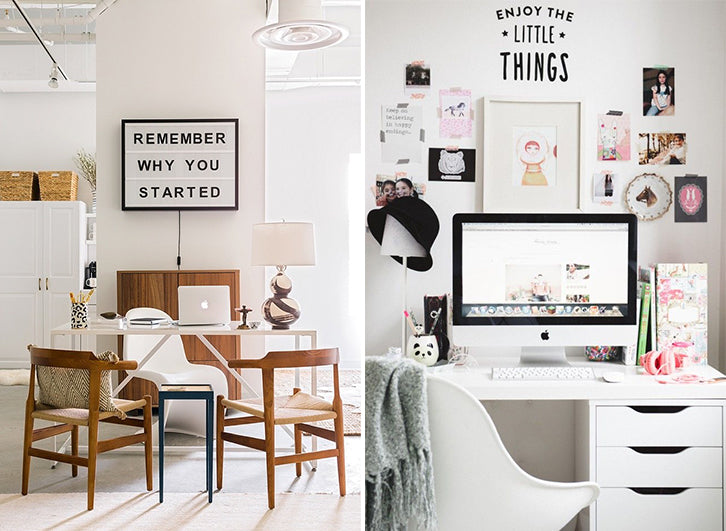
photos:Apartment34,The Financial Diet
BONUS: improvements to your home office space are legitimate business expenses and could be tax deductible!
“Improvements and business expenses need to specifically relate to your home office, so be sure to keep copies of receipts for all material purchases. As tempting as it may be, don’t try to claim a kitchen renovation or swimming pool installation—expenses that are too large will raise a flag with your country’s tax authorities." —Will Hillock, Tax Expert, Shopify
At my desk, the ceiling soars overhead, natural light streams in through industrial windows, and my pod-mates are engaged in a heated game of foosball. We’re not showing off. We’re building spaces where people want to be, and where we can make Shopify great for our merchants.
As an entrepreneur, you’re likely logging more hours at your desk than I am, and you’ve worked hard to build your business. Treat yourself with a space that inspires you to do what you do best.


